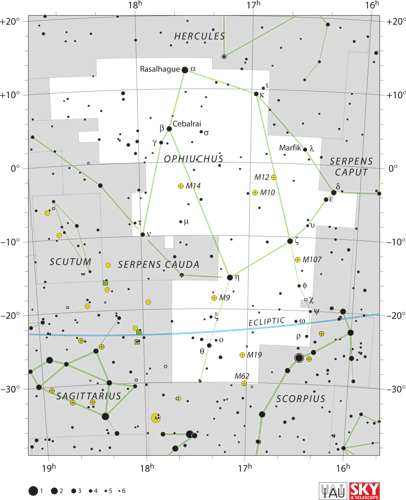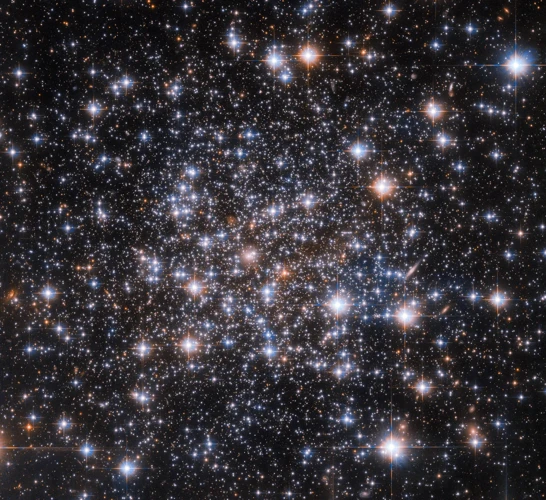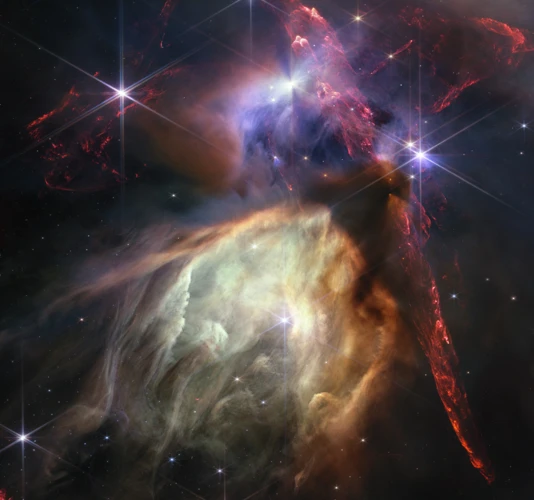Have you ever looked up at the night sky and wondered about the intriguing lives of stars? The universe is an unimaginably vast expanse, filled with celestial giants that undergo a captivating journey from birth to death. From the formation of stars within swirling nebulae to their explosive supernova deaths, the life cycle of stars is a fascinating cosmic spectacle. In this article, we will delve into the mesmerizing stages of star formation and evolution, exploring the intricate processes that shape these celestial beings. So, strap on your cosmic seatbelt and prepare to embark on a journey through the wondrous life cycle of stars.
Contents
- Formation of Stars
- Evolutionary Stages of Stars
- Star Clusters and Multiple Stars
- Binary Stars: Stellar Dance Partners
- Conclusion
-
Frequently Asked Questions
- 1. How are stars formed?
- 2. How long does it take for a star to form?
- 3. What fuels a star’s energy?
- 4. Can stars die?
- 5. What happens when a star becomes a red giant?
- 6. What is a supernova?
- 7. What remains after a star dies?
- 8. How are star clusters formed?
- 9. What are binary star systems?
- 10. What is mass transfer in binary star systems?
- References
-
Frequently Asked Questions
- 1. How are stars formed?
- 2. What is a protostar?
- 3. What is the main sequence phase?
- 4. What happens when a star becomes a red giant?
- 5. What is a supernova?
- 6. What are stellar remnants?
- 7. What are open clusters?
- 8. What are globular clusters?
- 9. What are binary star systems?
- 10. How do stars interact in binary systems?
- References
- Read More
Formation of Stars

The formation of stars is a mesmerizing process that begins within vast, swirling clouds of gas and dust known as nebulae. These stellar nurseries, scattered throughout the cosmos, provide the perfect environment for the birth of new stars. Within these nebulae, gravity exerts its pull, causing the gas and dust to condense and clump together. As the clumps grow larger, they form protostars, the early stages of a star’s life. These protostars continue to accumulate mass as they draw in more surrounding material. Eventually, when the protostar reaches a critical mass, the gravitational forces at its core become intense enough to generate nuclear fusion, igniting a bright, glowing ball of gas. This marks the beginning of the star’s main sequence phase, where it will shine steadily for millions or even billions of years, radiating heat and light across the cosmos. The formation of stars is a testament to the immense power of gravity and the awe-inspiring beauty of the universe.
Please take a moment to explore our Roman Pantheon Guide for more fascinating insights into ancient Greek and Roman mythology.
1. Nebulae: The Stellar Nurseries
Nebulae are enigmatic and captivating regions within the vastness of the universe. These stellar nurseries play a crucial role in the formation of stars. Nebulae consist of various elements, including hydrogen, helium, dust particles, and other molecules. They can range in size from small, compact clouds to immense structures spanning hundreds of light-years. The gravitational forces acting within these nebulae cause the gas and dust to slowly come together, creating regions of increased density. As these regions continue to collapse under their own weight, they give birth to protostars, the early precursors to stars. Over time, the intense gravitational forces and increasing mass within the core of the protostar lead to the ignition of nuclear fusion, transforming it into a fully-fledged star. Nebulae are truly cosmic cradles, nurturing the birth of stars and contributing to the dazzling diversity of celestial objects that grace our universe.
For a deeper understanding of ancient Greek and Roman mythology, be sure to check out our comprehensive guide on the role of Ophiuchus in ancient Greek and Roman mythological traditions.
2. Protostars: The Early Stages of Life
During the early stages of a star’s life, known as the protostar phase, a remarkable transformation takes place. As the gravitational forces continue to pull in surrounding gas and dust, the protostar grows in size and mass. These celestial embryos are surrounded by a thick cocoon of material, making them difficult to observe directly. However, astronomers use infrared telescopes to penetrate these dusty shrouds and study the fascinating processes that occur within.
Inside the protostar, intense pressure and temperature conditions cause hydrogen atoms to collide, leading to the ignition of nuclear fusion. This crucial moment signals the birth of a star, as it begins to release an enormous amount of energy in the form of light and heat. The protostar matures, gradually shedding its surrounding cocoon of material, revealing its radiant brilliance to the universe.
During this phase, protostars display a range of characteristics depending on their mass. Low-mass protostars, known as T Tauri stars, exhibit irregular, sporadic outbursts of energy, often accompanied by the ejection of jets of material. These powerful jets create stellar nurseries, where new stars can be born. On the other hand, high-mass protostars are immensely luminous, glowing fiercely as they continue to gather more mass from their surroundings.
The protostar phase is a critical period in a star’s life, as it sets the stage for the star’s future development and establishes its fundamental properties. Stay tuned to learn more about the main sequence phase, where stars settle into a stable and predictable state.
To delve into another captivating aspect of ancient mythology, be sure to explore our Unveiling Terracotta Army: Chinese Mythology article, filled with fascinating insights into ancient Chinese culture and legends.
3. Main Sequence: The Stable Star Phase
During the main sequence phase, stars settle into a stable period of their lives, where they shine steadily using nuclear fusion to generate energy. This phase is characterized by a delicate balance between the inward gravitational force pulling the star’s mass inward and the outward pressure created by nuclear fusion in the stellar core. The immense heat and pressure at the core cause hydrogen atoms to collide and merge, forming helium. This fusion process releases a tremendous amount of energy in the form of light and heat, making the star shine brilliantly.
The main sequence phase is heavily influenced by a star’s mass. Smaller stars, known as red dwarfs, have masses less than half that of our Sun. These stars burn their fuel at a slower rate and can survive for trillions of years, far longer than the age of the universe itself. On the other hand, massive stars, several times larger than the Sun, have shorter main sequence lifetimes. Despite their shorter lifespan, these massive stars burn their fuel at a much faster rate, causing them to shine intensely and emit large amounts of energy.
The stable phase of a main sequence star sets the stage for the formation of planetary systems around it. The warmth and radiation from these stars provide the necessary conditions for the formation of planets and the potential for life to thrive. As the main sequence phase progresses, stars may also undergo subtle changes, such as an increase in size and brightness. These changes occur as the star exhausts its hydrogen fuel and begins to transition into the next phase of its evolution.
The main sequence phase exemplifies the delicate balance and remarkable endurance of stars as they continue to emit light and heat, illuminating the vast expanse of the universe. It is a crucial chapter in the captivating life cycle of these celestial giants.
Evolutionary Stages of Stars

Evolutionary stages of stars showcase the remarkable transformations that occur throughout their lifespan. After spending millions of years in the main sequence phase, stars like our Sun begin to run out of fuel. As hydrogen fusion in the core slows down, the star expands and enters the red giant phase. During this phase, the star swells in size, becoming much larger and cooler than before. The red giant phase is a bittersweet period for the star, as it marks the beginning of the end. Eventually, the star’s core collapses, triggering a cataclysmic event known as a supernova. This explosive death unleashes an immense amount of energy and produces heavy elements that are ejected into space. In some cases, the core of the star collapses even further, forming either a pulsar, a neutron star, or in the most extreme cases, a black hole. These stellar remnants can exhibit incredible and often mind-boggling properties, such as emitting powerful beams of radiation or possessing gravitational forces so strong that they bend the fabric of spacetime itself. The evolutionary stages of stars are a testament to the ever-changing nature of the universe and its ability to create and destroy on a grand scale.
1. Red Giant: The Transition to Late Life
One of the most captivating stages in the evolution of stars is the transition to a Red Giant. After spending millions of years in the stable main sequence phase, a star begins to deplete its hydrogen fuel. As a result, the balance between gravity and radiation pressure shifts, causing the star’s core to contract while the outer layers expand. This expansion leads to a significant increase in the star’s size, and it becomes a Red Giant. With this transformation, the star becomes hotter and brighter, illuminating its surroundings with a vibrant, reddish glow. The Red Giant phase is a crucial turning point in a star’s life, signifying the beginning of its final stages. During this phase, the star may experience intense pulsations and shed its outer layers into space, creating a beautiful nebula. The fate of a Red Giant depends on its mass. For stars with lower mass, they will gradually shed their outer layers and form a dense, compact object known as a white dwarf. However, for more massive stars, the story takes a more explosive turn, leading to a spectacular conclusion known as a supernova. The transition to a Red Giant is both awe-inspiring and a prelude to the dramatic finale of a star’s life cycle.
2. Supernova: The Spectacular Death
A supernova is a truly awe-inspiring event, marking the spectacular death of a massive star. When a star exhausts its nuclear fuel, its core collapses under the force of gravity. This collapse triggers an explosion of unimaginable power, releasing an enormous amount of energy and light. The explosion of a supernova can briefly outshine an entire galaxy, making it one of the most energetic events in the universe. The intense heat and pressure generated during a supernova create the ideal conditions for the creation of heavy elements, such as gold and uranium. These elements are then scattered into space, enriching the surrounding interstellar medium and providing the building blocks for future generations of stars. The remnants of a supernova can take different forms, depending on the mass of the star. For less massive stars, the core can collapse into a super-dense object known as a neutron star. These highly magnetic and rapidly rotating objects emit beams of radiation and pulsate with great regularity, earning them the name pulsars. In the case of more massive stars, the core collapse can be so intense that nothing can withstand its gravitational pull, resulting in the formation of a black hole. Black holes are regions in space where gravity is so strong that nothing, not even light, can escape their grasp. The supernova, with its explosive power and transformative aftermath, showcases the dramatic end of a star’s life, leaving behind a legacy that influences the universe for eons to come.
3. Stellar Remnants: Pulsars, Neutron Stars, and Black Holes
Stellar remnants are the remnants of stars that have reached the end of their life cycle. These remnants come in various forms, each with its own intriguing properties. One type of stellar remnant is the pulsar, which is formed when a massive star undergoes a supernova explosion and collapses in on itself. The intense gravitational forces cause the star’s core to become incredibly dense, resulting in a rapidly rotating neutron star. Pulsars emit beams of radiation that can be detected as regular pulses, hence their name.
Neutron stars, on the other hand, are even more compact than pulsars. They are created when a massive star explodes in a supernova and its core collapses, squeezing protons and electrons together to form a star composed almost entirely of neutrons. Neutron stars are incredibly dense, with a mass greater than that of our Sun packed into a sphere only a few kilometers in diameter. These celestial objects have strong gravitational fields, and they often possess powerful magnetic fields as well.
Lastly, we have black holes, the most enigmatic and fascinating stellar remnants. A black hole forms when a massive star collapses under its own gravity, creating a region in spacetime with an extremely strong gravitational pull. The gravitational force becomes so intense that nothing, not even light, can escape its grasp. The boundary of a black hole is known as the event horizon, beyond which conventional physics as we know it breaks down. Black holes continue to captivate and baffle scientists due to their peculiar properties and the fundamental questions they raise about the nature of space, time, and gravity.
The existence of these stellar remnants showcases the extraordinary diversity and complexity of the universe. From the pulsars that pulse with electromagnetic radiation to the incredibly dense neutron stars and the mysterious black holes, these remnants offer us a glimpse into the extreme and mind-bending phenomena that can arise from the life and death of stars.
Star Clusters and Multiple Stars

Star clusters are captivating celestial formations that consist of a group of stars that are gravitationally bound to each other. These clusters come in two main types: open clusters and globular clusters. Open clusters are relatively young, containing hundreds or thousands of stars that formed from the same molecular cloud. They are found within the Milky Way galaxy and are characterized by their loosely bound arrangement. Open clusters showcase a dazzling array of stars, each with its unique brightness and color. Some notable examples include the Pleiades cluster, also known as the Seven Sisters, and the Beehive cluster, also known as Messier 44.
In contrast, globular clusters are ancient stellar systems that contain hundreds of thousands or even millions of stars densely packed together in a spherical shape. These clusters are found in the outer regions of galaxies, including the Milky Way. Due to their old age, globular clusters are considered relics from the early days of the universe. They exhibit a tightly bound structure, with stars in close proximity to each other. The stars in globular clusters tend to be much older and cooler than those in open clusters, giving them a distinct reddish hue. One famous example of a globular cluster is Messier 13, also known as the Great Hercules Cluster.
Multiple stars, also known as binary stars, are a common occurrence in star clusters. Binary stars consist of two stars orbiting around a common center of mass. There are several types of binary star systems, including visual binaries, spectroscopic binaries, and eclipsing binaries. Visual binaries are those that can be seen as separate stars through a telescope or even with the naked eye. Spectroscopic binaries, on the other hand, are stars that are too close together to be resolved individually, but their binary nature is revealed through the analysis of their light spectra. Eclipsing binaries are pairs of stars that pass in front of each other as seen from Earth, causing periodic changes in brightness.
The study of star clusters and multiple stars provides valuable insights into stellar evolution, dynamics, and the formation of planetary systems. These celestial arrangements offer a captivating glimpse into the diversity and complexity of the universe, where stars come together in clusters, dance in binary pairs, and paint the night sky with their collective radiance.
1. Open Clusters: Stellar Siblings
Open clusters are stellar siblings, a collection of stars that form from the same molecular cloud. These clusters consist of a few hundred to several thousand stars bound together by gravity, creating a celestial community. The stars in an open cluster are relatively young, typically less than a few hundred million years old, and are still in the early phases of their evolution. They share a similar chemical composition, as they all formed from the same interstellar material. Open clusters are often found in the disk of a galaxy, like our Milky Way, where the abundance of gas and dust allows for the formation of new stars.
These clusters have a characteristic appearance, with the stars arranged in a loose, spread-out pattern. They are often described as resembling a sparkling jewel box in the sky, as their stars shine brightly when viewed from Earth. Some well-known examples of open clusters include the Pleiades, also known as the Seven Sisters, and the Beehive Cluster. Open clusters play an essential role in the study of stellar evolution, as their stars provide a valuable opportunity to observe how young stars evolve over time. As the stars in an open cluster age, they will eventually disperse due to gravitational interactions with other objects, or the turbulent environment of the galaxy. Nevertheless, they provide a captivating glimpse into the interconnectedness of stars and the dynamic nature of the universe.
2. Globular Clusters: Ancient Stellar Systems
Globular clusters are ancient stellar systems that captivate astronomers and stargazers alike. These clusters consist of thousands to millions of stars that are gravitationally bound together in a spherical shape. Unlike open clusters that are relatively young, globular clusters are ancient, with ages exceeding billions of years. They are often found surrounding galaxies, orbiting their galactic host like loyal celestial companions. These mesmerizing clusters are densely packed with stars, creating a stunning visual spectacle when observed through telescopes. The stars in globular clusters are typically older and have a more primitive composition compared to stars in other parts of the galaxy. They provide valuable insights into the early stages of the universe, as well as the formation and evolution of stars. Some well-known globular clusters include Omega Centauri, Messier 13, and 47 Tucanae. Their collective brilliance and profound scientific significance make globular clusters a captivating subject of study that continues to unravel the mysteries of our cosmic origins.
Binary Stars: Stellar Dance Partners

Binary stars, also known as stellar dance partners, are a captivating phenomenon in the cosmos. In these systems, two stars are gravitationally bound to each other, orbiting around a common center of mass. There are several types of binary star systems, each with its own unique characteristics. The most common type is the visual binary, where the two stars can be seen separately through a telescope. Another type is the spectroscopic binary, where the presence of two stars is detected through the analysis of their combined spectrum. Additionally, there are eclipsing binaries, where the stars periodically pass in front of each other, causing their combined brightness to fluctuate. These binary star systems provide scientists with valuable insights into stellar evolution and dynamics. They can undergo interactions and mass transfer, where material is transferred from one star to the other, leading to changes in their individual properties. Some binary systems even result in the formation of exotic objects such as white dwarfs, neutron stars, or black holes. The study of binary stars not only enhances our understanding of stellar evolution but also contributes to various areas of astrophysics. The intricate dance between these stellar partners continues to fascinate scientists and stargazers alike, providing a glimpse into the intricate workings of the universe.
1. Types of Binary Star Systems
There are different types of binary star systems, each with its own unique characteristics. One type is the visual binary system, which consists of two stars that can be clearly distinguished from each other through direct observation. These stars may appear close together in the sky, but they are actually far apart, orbiting around a common center of mass. Another type is the spectroscopic binary system, where the presence of two stars is detected through variations in their spectral lines. These stars are too close together to be resolved individually, but their gravitational influence causes the spectral lines to shift and broaden as they orbit each other. Additionally, there are eclipsing binary systems, wherein the two stars orbit in such a way that when one star passes in front of the other from our line of sight, it creates a periodic decrease in the system’s overall brightness. This phenomenon is known as an eclipse. Lastly, there are the elusive and rare hierarchical triple star systems, which consist of three stars bound together by their gravitational interactions. In such systems, one star orbits around a close binary pair, resulting in a complex dance of celestial bodies. The diverse range of binary star systems adds another layer of complexity to the already captivating world of stars and their entangled celestial dance.
2. Interactions and Mass Transfer
Interactions and mass transfer play a significant role in the intriguing dance of binary star systems. These systems consist of two stars that are gravitationally bound to each other and orbit around a common center of mass. There are different types of binary star systems, including close binaries, wide binaries, and hierarchical systems.
In close binary systems, the stars are in close proximity to each other and can interact more directly. One common phenomenon in close binaries is mass transfer, where material from one star is transferred to its companion. This can occur through a process called Roche lobe overflow, where the star with a larger mass expands beyond its Roche lobe and transfers mass to the other star.
Mass transfer can have significant effects on the evolutionary paths of both stars. The accreting star, which receives mass from its companion, may experience an increase in its mass, leading to changes in its internal structure and evolution. The mass donor star, on the other hand, loses mass and may evolve at a faster rate than it would have otherwise.
These interactions and mass transfers can result in a variety of phenomena in binary systems. For example, the transferred mass can form accretion disks around the stars, fueling the formation of jets and outflows. In some cases, the mass transfer can cause the stars to merge, leading to the formation of more massive stars or even the creation of new stellar objects.
The study of these interactions and mass transfers in binary star systems provides valuable insights into the evolution and dynamics of stars. It helps us understand the complex processes that shape the lives of these celestial objects and the effects they have on their surroundings.
Creating an html list, we can summarize the key points of interactions and mass transfer in binary star systems:
- Binary star systems consist of two stars orbiting around a common center of mass.
- In close binary systems, interactions and mass transfer between the stars are more pronounced.
- Mass transfer occurs through Roche lobe overflow.
- Mass transfer can affect the evolution of both stars.
- Accretion disks and outflows can form as a result of mass transfer.
- Sometimes, mass transfer can lead to stellar mergers or the creation of new stellar objects.
Conclusion

In conclusion, the life cycle of stars is a captivating and awe-inspiring journey that takes these celestial giants from their formation within nebulae to their ultimate fate. From the early stages of protostars to the stable main sequence phase, stars blaze brightly, illuminating the cosmos with their brilliance. As stars age, they may transform into red giants, expanding and entering the later stages of their lives. Some stars meet a spectacular end as supernovas, releasing an immense burst of energy and matter into space. The remnants of these explosions can give rise to pulsars, neutron stars, or even black holes. Furthermore, stars can be found in clusters, ranging from open clusters that are stellar siblings to ancient globular clusters that form impressive stellar systems. Additionally, binary star systems showcase a stellar dance as stars orbit around each other. Through interactions and mass transfer, binary stars further shape their evolution. The exploration of these various stages and phenomena allows us to gain a deeper understanding of the vast and complex universe we inhabit. The life cycle of stars is a continuous symphony of birth, evolution, and demise, anchoring our sense of wonder and sparking our curiosity about the mysteries of the cosmos. So, as you gaze upon the night sky, remember that every twinkling star has a story to tell, a story of cosmic creation and destruction.
Frequently Asked Questions

1. How are stars formed?
Stars are formed within huge clouds of gas and dust called nebulae. Gravity causes the material in these nebulae to clump together, eventually forming a protostar. When the protostar reaches a critical mass, nuclear fusion ignites, and a star is born.
2. How long does it take for a star to form?
The time it takes for a star to form varies depending on the size of the nebula and the mass of the protostar. Generally, the process can take anywhere from a few hundred thousand to several million years.
3. What fuels a star’s energy?
Stars derive their energy from nuclear fusion, where hydrogen atoms fuse to form helium. This process releases a tremendous amount of energy in the form of light and heat, which is what makes stars shine brightly.
4. Can stars die?
Yes, stars have a limited lifespan and eventually die. The manner in which a star dies depends on its mass. Smaller stars like our Sun end their lives as white dwarfs, while more massive stars explode in dazzling supernovae.
5. What happens when a star becomes a red giant?
As a star’s nuclear fuel begins to deplete, it swells up and becomes a red giant. During this phase, the star’s outer layers expand and cool, causing it to appear larger and redder. Eventually, the outer layers are shed, leaving behind a dense core.
6. What is a supernova?
A supernova is a cataclysmic explosion that occurs when a massive star reaches the end of its life. The explosion releases an enormous amount of energy and produces shockwaves that can trigger the formation of new stars and reshape galaxies.
7. What remains after a star dies?
After a star dies, it leaves behind either a white dwarf, a neutron star, or a black hole, depending on its mass. These remnants are incredibly dense and can have powerful gravitational effects on their surroundings.
8. How are star clusters formed?
Star clusters are formed when a large number of stars are born from the same cloud of gas and dust. There are two main types of star clusters: open clusters, which are loosely bound and contain young stars, and globular clusters, which are tightly packed and consist of older stars.
9. What are binary star systems?
Binary star systems consist of two stars that orbit around a common center of mass. These systems are quite common in the universe and can consist of stars of different sizes and masses.
10. What is mass transfer in binary star systems?
Mass transfer occurs in binary star systems when material from one star is transferred to its companion. This can happen through stellar winds, gravity, or interactions between the stars. Mass transfer can dramatically influence the evolution and fate of binary stars.
References
Frequently Asked Questions

1. How are stars formed?
Stars are formed through the gravitational collapse of giant molecular clouds within nebulae, which are vast stellar nurseries in space.
2. What is a protostar?
A protostar is a young star that is still in its early stages of formation. It forms from the contraction of a dense region within a molecular cloud.
3. What is the main sequence phase?
The main sequence phase is the longest and most stable phase in a star’s life. It is characterized by the fusion of hydrogen atoms in the star’s core, resulting in a steady release of energy.
4. What happens when a star becomes a red giant?
When a star runs out of hydrogen fuel in its core, it begins to expand and becomes a red giant. This phase marks the transition to the later stages of a star’s life.
5. What is a supernova?
A supernova is a powerful explosion that occurs at the end of a massive star’s life. It releases an immense amount of energy and creates heavy elements through nuclear fusion.
6. What are stellar remnants?
Stellar remnants are the leftovers of a star after its death. They can include pulsars, neutron stars, and even black holes, depending on the size of the original star.
7. What are open clusters?
Open clusters are groups of stars that are loosely bound together by gravity. They often contain young stars that formed from the same molecular cloud.
8. What are globular clusters?
Globular clusters are densely packed groups of stars that are much older than open clusters. They are believed to be some of the oldest formations in the universe.
9. What are binary star systems?
Binary star systems consist of two stars orbiting around a common center of mass. They can be classified as either visual binaries or spectroscopic binaries.
10. How do stars interact in binary systems?
In binary systems, stars can interact and transfer mass between each other. This can lead to the formation of exotic objects like accretion disks and novae.
References
- A Fascinating Journey through the Life Cycle of Stars
- How Stars Form: A Star’s Life Cycle in Six Stages







